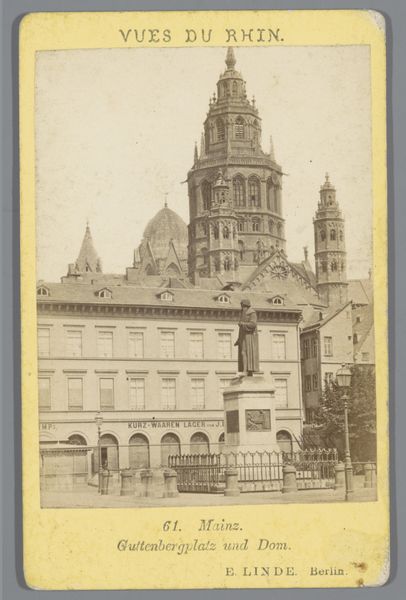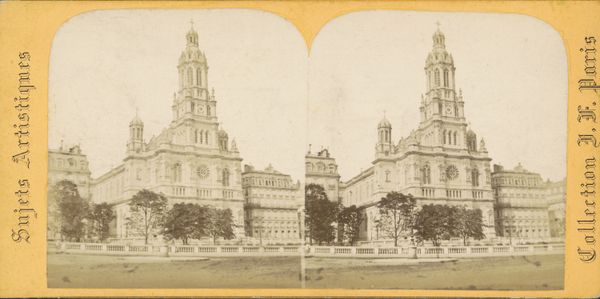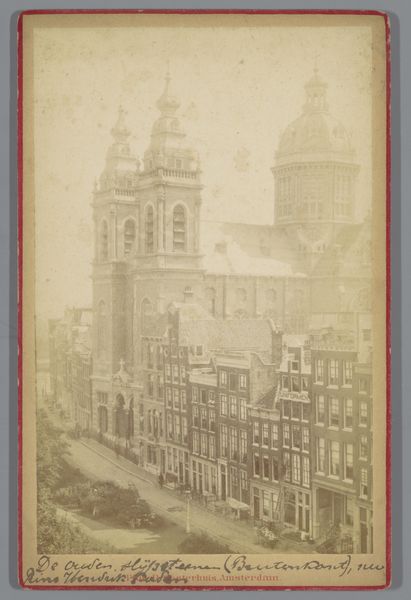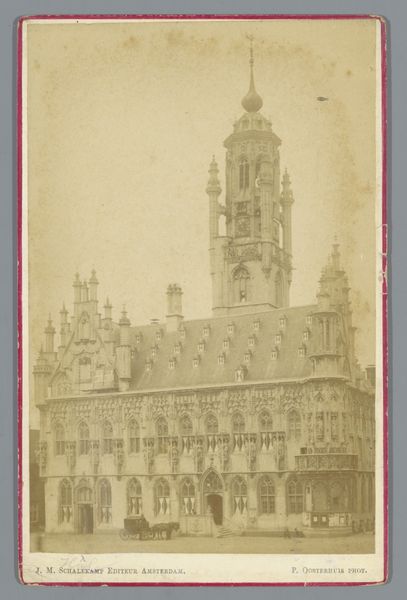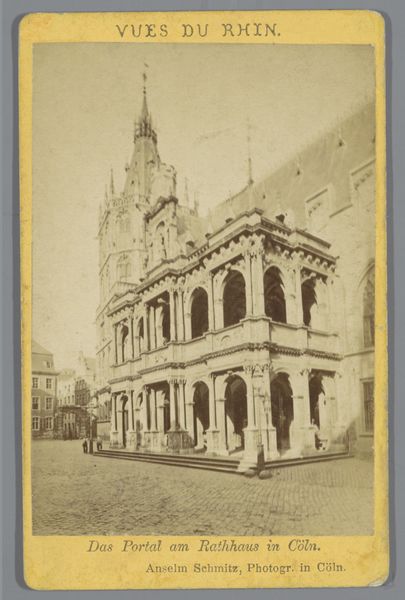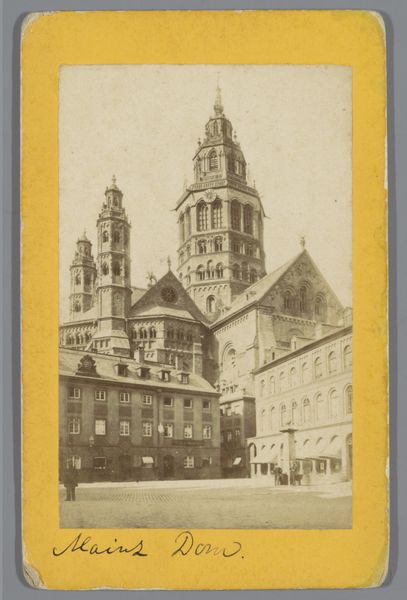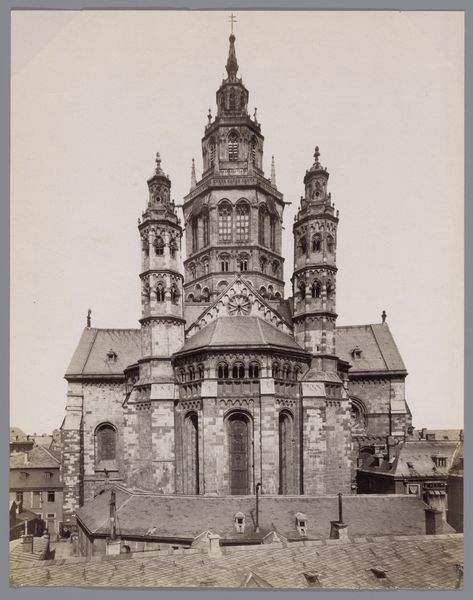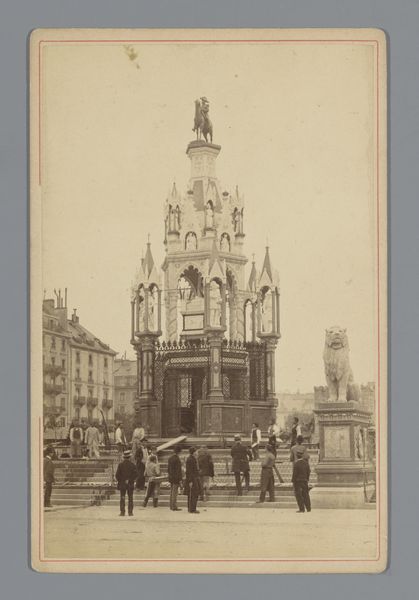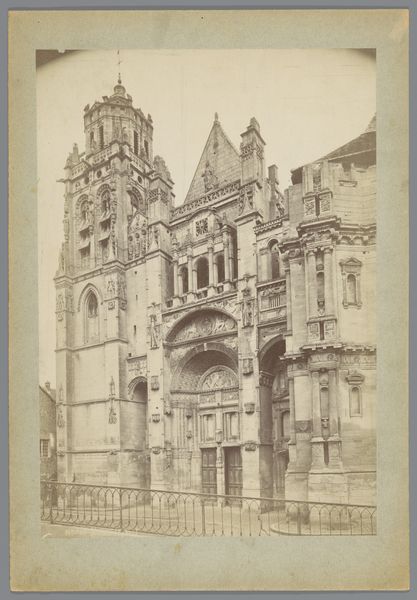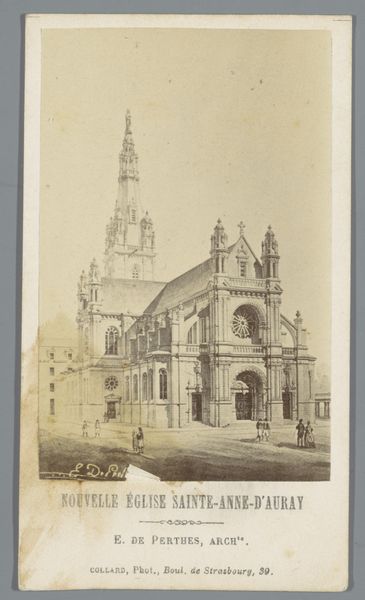
photography, albumen-print
#
photography
#
cityscape
#
albumen-print
#
realism
#
building
Dimensions: height 163 mm, width 108 mm
Copyright: Rijks Museum: Open Domain
Curator: This albumen print, captured between 1860 and 1890 by Ernest Ladrey, showcases the Église de la Trinité, the Church of the Holy Trinity in Paris. The church, constructed in the latter half of the 19th century, becomes in Ladrey's work an austere spectacle. Editor: My first impression is of meticulous labor, both in the physical construction and photographic process itself. The precision in capturing every carved detail of this formidable building… you can almost feel the weight of the stones used. Curator: Absolutely. Churches of this scale inherently reflect the collective effort—physical and ideological—of an era. Beyond the visual weight, consider the church's name; the Holy Trinity is perhaps the central, uniting symbol of Christianity, deeply rooted in theological and cultural understandings of divine unity. Editor: And it was constructed at a fascinating time. Photography was also experiencing its own evolution as a mass medium, making places like the Église de la Trinité and architectural landmarks far more accessible. The rise of commercial studios selling views of monuments across the continent made images like this consumable commodities. How does the image invite participation of new class structures and patrons into what would become religious architectural space? Curator: A relevant question! Churches are obviously imbued with spirituality, yet function materially. I'm drawn to the interplay between its implied sacred status, and its existence as an object within Parisian culture, a testament to the enduring power and evolving symbolism. It is there as both subject and sign. Editor: And the signs include both the imposing façade of the Trinité itself and the signage denoting E. Ladrey, PHOT[ographer] just below the frame's middle edge. Here’s hoping the historical record continues to evolve regarding what “passage” was also taking place through Ladrey’s studio during the construction of this colossal structure and throughout France at this moment in history. Curator: So well put! What the symbols invite us to ponder further is how the intersection of art, architecture, religion, and human vision has materialized new traditions of expression over time, each layered on one another and shifting how societies find sacred meaning in public artifice. Editor: Thank you! Yes, that's key to interpreting it—seeing it as a manufactured entity, influenced as much by the availability of construction materials and economic engines for mass distribution.
Comments
No comments
Be the first to comment and join the conversation on the ultimate creative platform.

